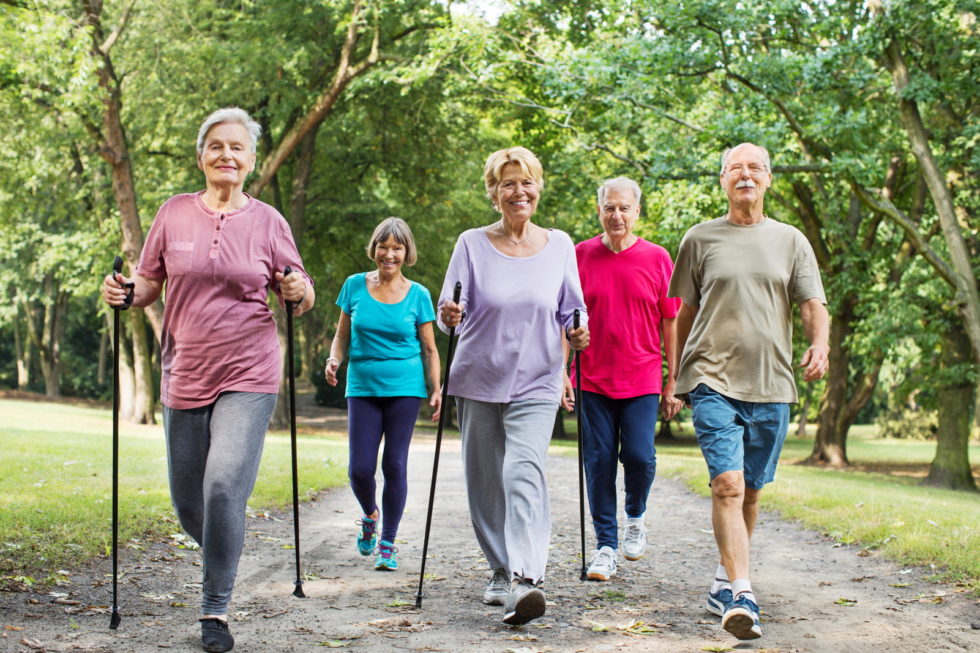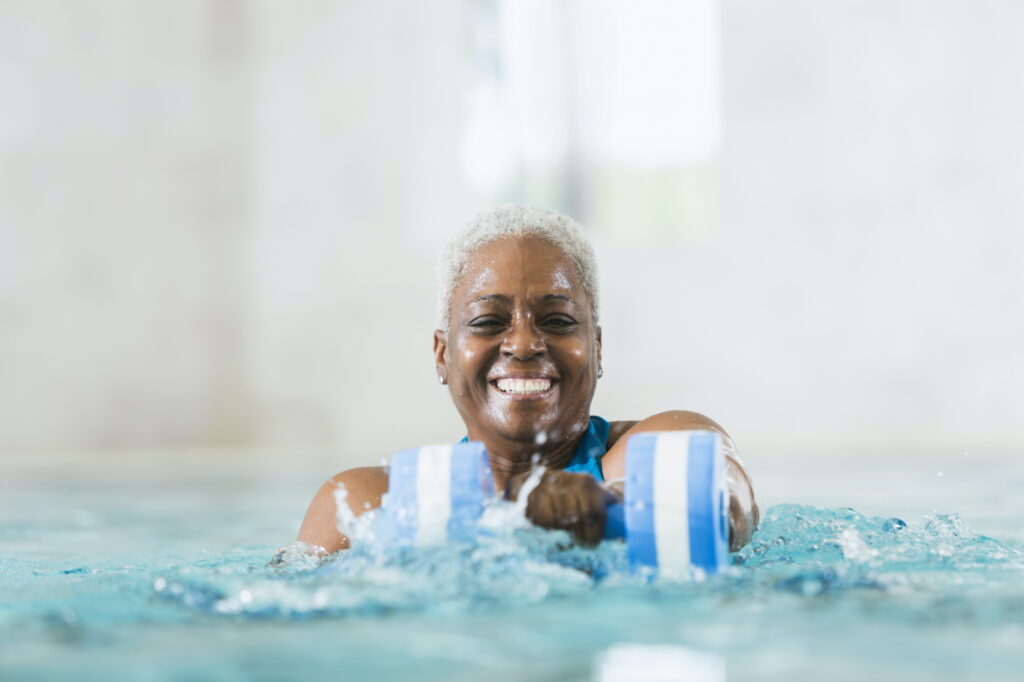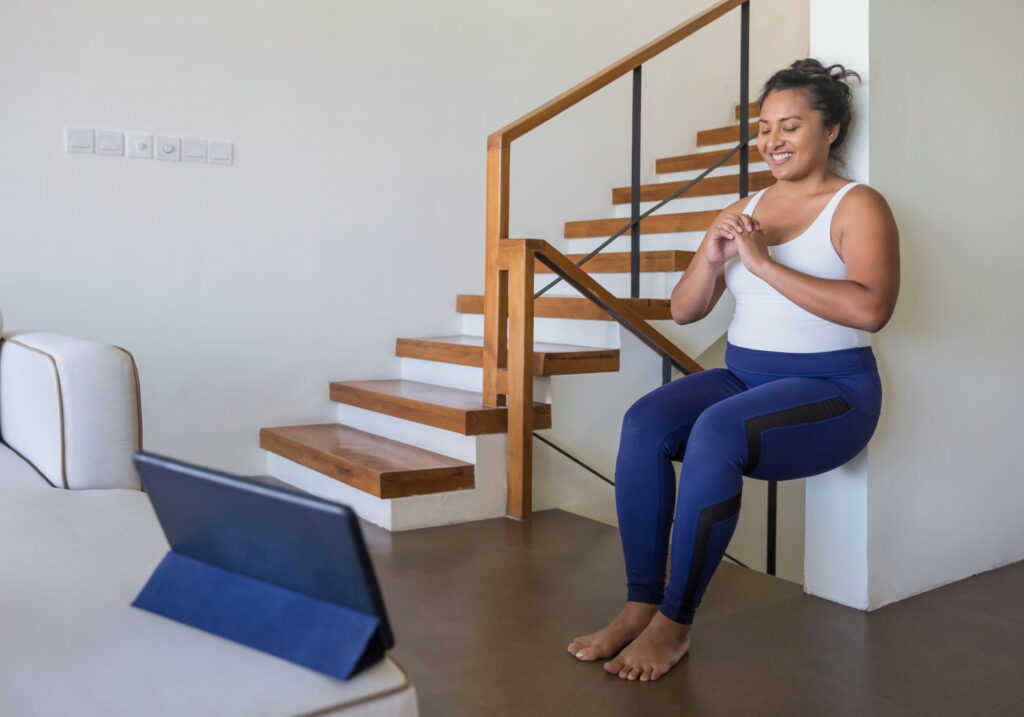5 Easy Exercise Tips to Improve Leg Circulation
Author: StrideCare Internal Team

Do you experience ongoing irritating or painful leg circulation issues? If could be that your job requires you to sit for long stretches of the day and limits your ability to get up and get your blood pumping. You may have an underlying health condition like diabetes. Or, maybe you’ve been diagnosed with a vascular disease such as varicose veins or peripheral arterial disease. If this sounds all too familiar, one way to improve leg circulation is with exercise. And trust us when we say that doesn’t mean you have to immediately sign up for a strenuous marathon, lift heavy weights at the gym, or mountain bike for an entire weekend.
More than 25% of Americans suffer from vein disease, including some whose symptoms are so debilitating that they struggle to walk short distances. While age is a factor, people in their 20s and 30s can be just as susceptible. The good news is that it is treatable, and many people rely on exercise to help them lead a normal life. From Yoga to walking, jogging, or a bike ride, there are ways to improve blood flow and reduce symptoms of poor leg circulation.
Do You Experience These Poor Leg Circulation Symptoms?
- Varicose veins
- Throbbing, heavy, and achy legs
- Swollen feet and ankles
- Pain while walking
- Restless legs, especially at night
- Leg discomfort after sitting or standing or too long
- Muscle cramps
Benefits of Exercise to Improve Leg Circulation
Our veins typically work on a one-way system using a series of strong valves to ensure the traveling blood doesn’t flow back in the opposite direction with gravity. As we age, our veins don’t work as well as they used to. Plaque buildup and weak valves ultimately lead to blood pooling in areas it shouldn’t and create a variety of complications and discomfort. There are many factors that play into this, including age, obesity, and poor diet. For the purposes of this article, another is when we lead sedentary lifestyles.
According to the Centers for Disease Control, 1 in 4 Americans don’t get enough physical activity. In other words, they spend too much time sitting. Most research suggests that Americans sit for an average of almost 10 hours each day, which means we are spending almost half the day sitting. Sitting around too much each day only makes it harder for our veins to function properly. When you’re moving around and walking, there is increased blood flow throughout your body and in the veins in your lower extremities. Conversely, inactivity limits blood flow.
As a result, an average of one in every three adults over the age of 45 develops some form of vein disease.
- Spider veins and varicose veins
- Blood clots or deep vein thrombosis
- Chronic venous insufficiency
- Skin leg ulcers
This is where simple lifestyle changes such as exercise can help keep these conditions from getting worse. Incorporating 30 minutes of daily exercise into your routine gets the heart pumping and promotes healthy leg circulation. In fact, the American Heart Association recommends at least 150 minutes per week of moderate-intensity aerobic activity (running, walking, jogging, weight training, etc.) and to increase that gradually over time.
6 Exercise Tips to Improve Leg Circulation

- Hamstring Curls
Many people focus on the front part of their legs, but don’t forget about the hamstrings, which also play a vital role in overall leg strength and can promote healthy leg circulation. You can do this exercise in a standing position by standing next to a table or chair for balance and raising your heel toward your buttocks. Pause at the top before lowering your leg slowly. If you are able, you can also perform this exercise while lying face down on the ground and following the same range of motion with your leg.

- Leg Extensions
Leg extensions are a great exercise to improve leg circulation because they can be completed at home, while at work, and even during a car ride if you have the extra leg room. To begin, simply get into a seated position and slowly raise your left leg up until your knee is completely straight.
Hold this position for a second or two before lowering your leg back down the ground in a slow and controlled motion. Do three sets of 10, alternating legs to work them equally. You can incorporate leg weights or use your own body weight to complete this leg circulation exercise.

- Swimming
Swimming is not only a fantastic low-impact exercise that improves flexibility and mobility of stiff joints and utilizes all muscle groups at one time, but it is widely regarded as being extremely beneficial for your veins. This is because swimming decreases the effect gravity has on leg veins, thus relieving unnecessary pressure and promoting proper blood flow. The slight pressure of the water works the muscles so your veins can push blood back to your heart.
Examples of simple swimming programs might include:
Treading water — Keep your head above water while moving your arms forward and backward with your hands closed facing the way they are moving. At the same time, move your legs in a circular fashion. If you need to, use a flotation device or the side of the pool as a brace if you struggle to stay above water.
Use a kick board — While lying forward in the water, hold a kick board in front of you with your hands out and relax your hips. From there, slowly kick or flutter your legs up and down in the water without splashing. This exercise gets your feet, calves, thighs, and hip flexors involved and helps improve your core strength.

- Walking
Walking—even for 30 minutes a day—is an underrated way to stretch our legs, get the heart pumping, and increase leg circulation. A National Institutes of Health survey says that adults who took 8,000 or more steps a day had a reduced risk of death over the following decade than those who only walked 4,000 steps a day. Here are a few practical ways to incorporate more walking into your daily routine.
Schedule your walks – Make it a point to put your walking time on your calendar or to-do list. This could become a regular thing where you walk for 30 minutes before or after work.
Find an accountability partner — It’s harder to get motivated to walk on National Walking Day or any other day if you’re doing it alone. Grab a spouse or friend who also needs some motivation and hit the trails together.
Walk the dog — Taking the dog for a walk every day is a perfect excuse to get out of the house or away from work and get some important steps in.

- Wall Squats
Squats are great for leg circulation because they bring the heart closer to the level of the feet. Wall squats are an alternative form of squats where you stand with your back against a wall and slide down into a squat position. Bend at the hips and knees and hold that position for 30 seconds.
Wall squats can be performed with your own body weight or by holding dumbbells in each hand.

- Yoga
Yoga is a total mind-body workout that combines strengthening and stretching poses with deep breathing and meditation or relaxation. There are many kinds of yoga styles and practices, some fast-paced and intense and others gentler and more relaxing. Either way, yoga movements play an important role for those who suffer from leg circulation issues by building strength, increasing flexibility, and stretching your muscles and connective tissue to facilitate blood circulation throughout your body. Just a few simple yoga poses include:
Legs in the air — Lie on your back and rest your hips up against the wall. Lift your legs up toward the ceiling and flex your feet while at the same time straightening your legs. Hold this pose for at least 10 deep breaths. This pose uses gravity and stretches the thigh muscles to push blood from the legs and pelvis toward the heart.
Downward Dog — Start in a plank position with your shoulders over your wrists. Push your hands forward into the ground as you push your hips back toward the wall behind you. Keep your ears in line with your elbows and gaze between your toes or toward your navel. Press your thighs back while moving your heels toward the floor. Because your hips are higher than your heart, blood flow is significantly improved.

If You Have Leg Circulation Issues, StrideCare Can Help
While treatable, vein disease does not cure itself, and there’s no way to prevent it completely. This is why it is important to recognize vein disease in its earliest stages—including issues you may have with poor leg circulation—and seek help from a medical professional who can guide you on your next steps. StrideCare physicians are board certified diagnostic radiologists with additional fellowship training in vascular and interventional radiology.
At StrideCare, we believe it’s important for our patients to be as educated as possible and know when to seek treatment. When this happens, more people can make informed decisions about their vascular health. If your veins need treatment—or you have questions on how to avoid the onset of venous disease—the experts at StrideCare will recommend an individualized plan to help you get the best results. Request an appointment for a vein disease evaluation to discuss your options.
Prior to starting any new treatment or questions regarding a medical condition, always seek the advice of your doctor or other qualified health provider. This information is not a substitute for professional medical advice.
StrideCare serves the South Texas area including Houston, San Antonio, Austin, Round Rock, Bastrop, Brushy Creek, Cedar Park, Converse, Georgetown, Hutto, Kyle, Leander, Marble Falls, New Braunfels, Pasadena, Pearland, Pflugerville, San Marcos, Schertz, Houston, Sugar Land, Katy, Webster, Bay City, Clear Lake, Lake Jackson, The Woodlands, Universal City, Spring, Kingwood, Stafford, Conroe, Texas City, Cypress, League City, Bellaire, and more.


